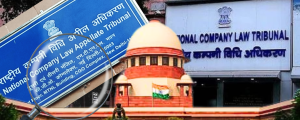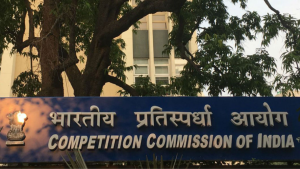

A Close Look at Karnataka High Court
- /
- Articles and Blogposts /
- A Close Look at Karnataka High Court
It’s been a while since we’ve taken a close look at our ever-growing data, and we’re back with a small analysis of the Karnataka High Court.
As an update, we now have data for 8, 71,406 cases from 10 High Courts. The distribution of cases across courts is explained below.
As you can see, a significant proportion of all cases in our database — about 25% — are from Karnataka. The data from the Karnataka High Court website is both comprehensive and well-maintained. The biggest advantage has been that we have accessed historical data, meaning data on cases from previous years in the court.
Note: The distribution of 8 lakh cases in the DAKSH database as per High Court.
We decided to have a look at the average pendency of cases as per case types in the Karnataka High Court.The average pendency is the number of days on average cases remain pending in a court (as on date). We split this up by case type: A case type is a classification laid out by each High Court that allows cases to be sorted for administrative purposes. A case type is usually based on the subject matter of a case.
Essentially, what we are looking at is how long a subject matter is likely to take in a High Court, as per our database today.
Of the 2 lakh sixteen thousand cases from Karnataka, there are 53 case types. We have at DAKSH categorised the case types according to broader groups of civil and criminal. Of the case types in Karnataka, about 51% are civil cases, and only about 16% criminal. The remaining 33 % of the cases could be either civil or criminal, being a variety of miscellaneous petitions, appeals and matters that cannot be classified with just the knowledge of case types.
It turns out that writ-related matters constitute about 32% of all cases that are in Karnataka High Court at the moment. As mentioned by Ramya in an earlier blog post, writs are the orders certain courts issue to enforce a citizen’s Fundamental Rights (as laid out under the Indian Constitution). And it appears that on average, all these matters have already taken 2 years in court.
Appeals in the Karnataka High Court constitute nearly 49 % of the total number of cases — and we’re looking at Writ Appeals, Miscellaneous Second Appeals, Miscellaneous First Appeal, Criminal Appeal, Income Tax Appeal, Regular Second Appeal, Regular First Appeals.
An appeal is a case that arrives at the High Court after it has finished its life in a lower court. This happens when a party in the case is unhappy with the outcome of a case, or the final ruling made by a judge. What the party is allowed to do, legally, is request a judge in the High Court, to revise and reconsider this outcome.
Appeals can be both civil and criminal matters, and usually appear in the High Court after a significant life span in a lower court.
The average pendency of appeals in the Karnataka High Court is 1253 days — that is nearly 3 and a quarter years! By their very nature, appeals have already been through a whole life cycle in a lower court.
Assuming that these cases have taken even half the time that they are currently taking in the High Court, an appeal in the Karnataka High Court appears to have spent at least 5 whole years in the courts itself!
Justice delayed indeed!
The views expressed in this article are solely those of the author’s and they do not represent the views of DAKSH.

Kavya Murthy
RECENT ARTICLES


Judicial discipline or lack thereof in NCLT and NCLAT

Year in Review: NCLT and NCLAT Under the Supreme Court’s Microscope

Testing the Waters: Pre-Implementation Evaluation of the 2024 CCI Combination Regulations

-
Rule of Law ProjectRule of Law Project
-
Access to Justice SurveyAccess to Justice Survey
-
BlogBlog
-
Contact UsContact Us
-
Statistics and ReportsStatistics and Reports
© 2021 DAKSH India. All rights reserved
Powered by Oy Media Solutions
Designed by GGWP Design